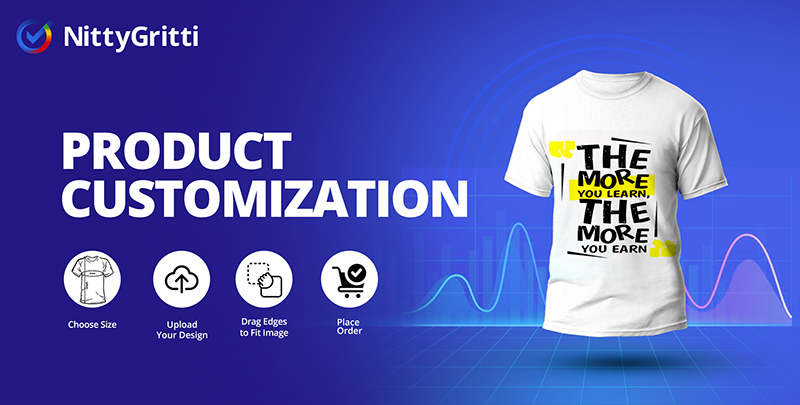What’s New on Amazon: Product Customization

Here’s some good news for sellers of handmade, unique, or niche products: A new feature has arrived, allowing you to offer personalized product customization directly to your customers. Amazon has finally launched a product customization button in the Indian market, enabling you to offer tailored options and a unique shopping experience to customers.
Indian customers are always on the hunt for something new, something special, or something that no one else has. In a country that values handmade products and craftsmanship, the tight PDPs of Amazon are a struggle for makers of products that come in ones, twos, or can be changed according to the customer’s taste. Sellers tend to depend on more flexible spaces with a smaller customer base or on their own websites to offer the best of their work.
IndiaToday has reported that over 10,000 products across 76 categories are available with this option, according to Amazon. Currently, the feature shows up as a ‘Personalize It’ button. There is no dedicated category page, but you can add a search keyword like ‘customize’ to locate these products. For sellers with an entire inventory of unique or handmade products, you can make use of Amazon Custom, a storefront dedicated to product customization.
How to use Amazon’s product customization offer:
1. Get to know the options
Amazon lets you change the text, add images to the product or customize the product itself. If you’re offering a gift product, like a cup with a mother’s day message on it, you can offer customers the option of making it personal. If you’re selling T-shirts, you can offer customers the option of uploading an image to print on the T-shirt before they make a buy. If you’re selling designer clothes or handmade trinkets or jewellery, you can offer customers a dropdown menu where they can choose the perfect variation.
2. Set it up
To set up your Amazon Custom storefront, start by registering to join. This feature is only available for products listed under Merchant Fulfilled network (MFN) and EasyShip Products. Then, enable your listings for customization.
Once you’ve done this, you can use the listings tool on Seller’s Central to configure your product options. You can name your product surfaces, upload preview images and offer customers the option of uploading images. Select the number of customizations you’re offering and map by type:
- Can your customers change a part of the product, the colour of the product or the product itself?
- Can they construct the product through a step-by-step procedure?
Once you’ve done this, you can enter information for customers to get to know what they can do and how much they can fiddle around with the product, or add to the creative process.
Finally, check under Miscellaneous for all the fields Amazon might have missed in the main categories. For many sellers in India, this might include the product itself, in a country that values the unique, the handmade and the product that can’t be matched very highly.
3. Set up your storefront
You can upload products by bulk on Amazon Custom if your product is variable by type, or by a single specification, like text or image. If you’re offering changes by product itself, then you’ll have to upload each product manually. Once this is done, do a quick run-through of your PDPs.
Have you entered in all the details, and made customers aware of just how much they can do with your product? Check the Customize It button to make sure it works, and see what pops up when you use it.
Remember, custom products are not Amazon-fulfilled, so make sure you have your shipping arrangements set up well in time. You will need to process, package and ship each order yourself, so if you’ve been hanging onto an idea for beautiful and creative packaging to match your product, now’s the time to put it out there.
Advertising custom products
Custom products can appear on Amazon’s sponsored ads, but you’ll have to enter the relevant keywords to make sure they reach customers who are actually looking for products they can add a bit of self-expression to, or change. This is a niche customer, so you’ll have to be careful with your keyword choice, and make sure they’re specific to your product, instead of bombarding every possible category. You will have to use words like ‘customized’ or ‘personalized’ to let people know that this option exists, and is available to them.
If you’re just getting the hang of setting up PDPs and you’re not sure if you’ve communicated your product in all its shades and varieties, then visit us at nittygritti.com and we’ll do a very thorough review of your pages to make sure everything is following regulations. Remember, no matter how beautiful your products are, images need to follow regulations and the style guide has to be met in absolute correctness.
NittyGritti’s AI powered tool does a comprehensive review of product titles, images and descriptions, ensuring that you’re sticking to the rules and letting you know when something needs to be changed. This might be invaluable for young companies venturing into the marketplace with products that might require a more detailed categorisation and description. Get in touch with us to review and enhance both your storefront and customer experience.
Image reference
https://www.amazon.in/Mad-Masters-Customized-Personalised-Portrait/dp/B0C739QDTP
https://www.amazon.in/Oye-Happy-Personalised-Girlfriend-Anniversary/dp/B08LC4SCNH

